Spinal stimuli and good vibrations: All about Parkinson's
This week - following the revelation that a man with debilitating Parkinson’s Disease has been helped to walk again with a special implant that stimulates nerves in his spinal cord - that’s what we’re going to look at in this half hour. We’ll be hearing from the surgeon who performed the operation, and other experts seeking to understand more about the condition...
In this episode

01:02 - Living with Parkinson's
Living with Parkinson's
Mark Mardell
What is it like to live with Parkinson’s? Chris Smith to the former BBC presenter and editor, Mark Mardell, who now makes the “Movers and Shakers” podcast which aims to promote greater awareness of the disease. He began by asking Mark when he realised that something was up…
Mark - I noticed a few weirdnesses about my body. Particularly, I was finding it difficult getting into packaging and I love cooking and I spend a lot of my time cooking. Waitrose's packaging was just defeating me and I thought, 'they're just making this stuff tougher and tougher.' And then we went to stay with an old friend who used to be a physiotherapist and she realised there was something wrong. She told my wife, told me. I realised, after I started Googling symptoms, it was almost certainly Parkinson's and basically had to... not push the medical profession, but I was there before they were, perhaps.
Chris - How did they then pursue it?
Mark - I've been managing it, I think, largely. Obviously the drugs help. The neurologist has put me on various drugs which are the same ones most people have. I think I've learned more from this podcast I do, 'Movers and Shakers:' stuff about exercise, diet, which you don't really realise before and you don't get told by the medical profession, which is a bit of a beef of ours and mine. You go to the doctor and they'll prescribe the drugs and they're asking how the drugs are working, they'll test whether you're working or walking or whatever and if it is getting worse or better. But they didn't actually tell you these vital lifestyle things. I was never a great one for exercise, but I realised how important that is, for instance. It's something that everybody should be told: you do need to exercise.
Chris - Has Parkinson's robbed you of anything that you really loved doing? Do you now think, I just can't see myself doing that or getting the same enjoyment I did?
Mark - It's changed my life quite a lot. Everything is so much slower. Getting up in the morning, getting dressed, getting washed, everything like that. It just takes so much longer. And of course the thing that has really changed for me is my voice and that's had an impact because I've been a broadcaster all my life. My wife was always telling me, 'Shush! Keep your voice down. You're booming all over the place. You're just too loud!' I'm getting to terms with it. I'm having some therapy, but it has diminished me. It's like getting old, but it's sped up. I talked to one neurologist after a podcast and he said, 'Everybody will suffer from Parkinson's by the time they're 90.' They didn't mean literally, but it means the symptoms of being 90 are the same as the symptoms as Parkinson's in many ways. It does slow you down. The one thing I really can't do is typing. That's the double whammy with the voice because I try to use voice software and it comes out like beat poetry.
Chris - What frightens you the most about it?
Mark - Where it ends up. It was interesting, in the recent podcast, we had all our partners in and we realised we all put it in a box and put it away in the back of our minds. Nobody wants to end up not being able to walk or not being able to speak or whatever. How disabled you become, this is super scary, very frightening and you try not to think about it. I enjoy my life enough now. I want that to last as long as possible and to not get there really.
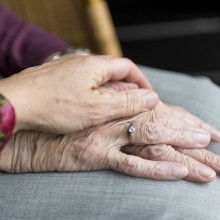
04:21 - What do we know about Parkinson's disease?
What do we know about Parkinson's disease?
Claire Bale, Parkinson's UK
So, what do we know - and not know - about this disease? Chris Smith spoke to Claire Bale, associate director of research at Parkinson’s UK…
Claire - Parkinson's is a progressive neurological disorder and that means it affects the brain, primarily. We know that, in people with Parkinson's, they don't have enough of a chemical called dopamine inside their brains. Particular brain cells that make dopamine - a chemical that's used to do many things in the brain - start to die for some reason and we don't know why that is. And because people with Parkinson's don't have enough dopamine, it means that they can't get the messages that they need to around the brain that help to coordinate movement. And that's why the symptoms of Parkinson's include many movement difficulties. So people might shake, have slow shuffling walking, stiffness, slowness of movement, very small handwriting, things like this can be some of the really obvious signs of Parkinson's.
Chris - What tends to be the first things people notice that, when they look back they say, 'I think that's how it began.'
Claire - It's a really good question because we now believe that, by the time obvious symptoms of Parkinson's, so the things that I've mentioned like slow stiff movement or a shake in a hand, for example, once those emerge, we actually believe up to 70% of the brain cells that make dopamine have already died. So we think Parkinson's may start a long while before those symptoms emerge. And some of the very early symptoms can include things that are not movement related, things like low mood or depression, anxiety, sleep problems, constipation, loss of sense of smell. So although we think about Parkinson's as being primarily all about movement, it's actually much more complicated than that. We're still learning about all the different things that can be affected in Parkinson's and how they might emerge. But some of those symptoms can be up to 10 years or even longer before a diagnosis is made.
Chris - Who tends to get it? More men than women? Certain ethnicities? Do we have a picture?
Claire - It's more common in men. Probably about 55% of people with Parkinson's are men compared to women. It's usually older people. So most people who get it are diagnosed after the age of 60, but it can affect anyone at any age. I've met people in my job who've been diagnosed in their twenties or thirties, so it can really affect anyone. In terms of ethnicity, we don't have enough research. Most research has been done in Western populations in Europe and America, so we have a bit of a skewed view, but we do know that it affects people all over the world. We've been involved in research done in Africa, for example, and there are people living in Africa with Parkinson's, although they often don't even know they have Parkinson's because there isn't the same level of care or awareness of the condition.
Chris - And I suppose if you have a disease that generally affects older people and you have a population that is younger for various reasons, it may not be as manifest as it would in a an older population like the UK?
Claire - Yes, absolutely. So in the UK we think there are about 153,000 people living with Parkinson's right now, but we expect that number to go up as our population continues to age. We think there might be over 170,000 by 2030, I think. It's definitely a condition that's on the increase, not just in the UK but around the world, partially due to the ageing population. But there may also be other factors that are driving that increase, such as environmental factors that might be involved in causing it like pollution or exposure to chemicals.
Chris - And is there anything we can do to identify people who might be at risk? Or just reduce everyone's risk? Or both?
Claire - Yes, really good question. We're actually funding research right now to try and find best ways to predict Parkinson's and identify people who are at more risk. So if you've got Parkinson's in your family, then you are at slightly higher risk than someone who doesn't. Age is the main risk factor. We all get more likely to get it as we get older. If you've worked with pesticides for example, not many people do but, if you have, that can increase your risk. There are also things that can decrease risk: the most surprising one being smoking. People who smoke, or used to smoke, are less likely to get Parkinson's than people who don't smoke. Most of the time we think about smoking as having no positive effects, but this seems to be one. And also we know that people who exercise, people who have a really healthy diet, are slightly less likely to get Parkinson's, but smoking is one of the strongest protective factors.
Chris - Although cynics say that people who smoke might not live long enough to get Parkinson's disease, but you are, I presume, controlling for that. And we're not advocating that anyone should take up smoking to reduce their risk of Alzheimer's or Parkinson's disease because obviously the risks of everything goes up enormously when you smoke.
Claire - Absolutely, yes. So those studies have controlled for the fact that people who smoke are less likely to live as long. We do not advocate that anyone takes up smoking. But it's interesting and it has triggered quite a lot of research into things like nicotine and the effect it might have on dopamine producing cells in the brain, that kind of thing. So it might be that we can figure out why smoking is protective and then use that knowledge to help us develop new therapies or preventative strategies.
Chris - Speaking of therapies, what can we do if a person's newly diagnosed with Parkinson's disease? How are they managed?
Claire - Really good question. So Parkinson's is primarily treated using medication. So we have a range of medications that essentially work by topping up dopamine inside the brain or pretending to be dopamine inside the brain. So suddenly people who are unable to make enough dopamine themselves with the brain cells that they have, have extra dopamine to play with and that can help iron out the problems that they have with movement. Those medications are very effective, especially in the early stages of the condition. But we don't have any treatments yet that can stop the progressive loss of brain cells that make dopamine. That means that, over time, people's symptoms get worse, but also they need to take more and more medication to top up their dopamine levels. That means they're more at risk of developing side effects. That's why we need to find better treatments for Parkinson's. But, alongside medications, we also know there's lots of other things that are really important, particularly exercise. Exercise is really important for people with Parkinson's in helping to maintain mobility and flexibility, building strength and stamina. We also believe, through research, that exercise might actually have a protective effect. It might be the only thing we have at the moment that can actually slow down the progressive nature of the condition. It can't stop it, but it might be helping to protect people and keep people healthy and well for longer.
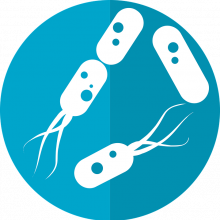
11:29 - Microbiome signals early Parkinson's
Microbiome signals early Parkinson's
Tim Sampson, Emory University
We head to the United States now, where scientists have done much to advance our understanding of Parkinson's disease. In 2016, researchers at the California Institute of Technology published remarkable findings in the journal Cell which suggested that the brain disorder may be caused by bacteria living in the gut. Or, does the disease provoke a change in the bacteria in the gut? The jury is currently out. Emory University’s Tim Sampson is one of the researchers studying this…
Tim - Since the very beginning, when James Parkinson published his first essay on Parkinson's Disease, or the 'Shaking Palsy' as he called it 200 years ago, he noticed that individuals who had tremors also had significant constipation. Since then, the neurologists have noted that individuals who eventually are diagnosed with Parkinson's disease also often had constipation leading up to that point. So there is this notion that something was occurring within the gut for many decades before even an individual was diagnosed.
Chris - And if we drill into that a bit, is it that the same process that is causing the loss of cells in the brain is causing the problem in the gut? Or does the trouble begin in the intestine and then spread brainwards?
Tim - That's still up in the air. I think both options are open. James Parkinson suggested that maybe there was some sort of infectious organism initiating the pathology from the gut, but I think more recently we're seeing evidence that perhaps there are individuals where it could be starting in the brain and descending into the gut. So it possibly is happening both ways.
Chris - When you look at the gut and specifically the microbes in the gut in people with or who are going to get Parkinson's disease, what changes do you see?
Tim - We've seen that, in individuals with Parkinson's disease, there are particular organisms that appear consistently enriched, and then there are some organisms that are consistently decreased. But what makes the organisms that are decreased really interesting is that those happen to be organisms that feed on dietary fibre. So the organisms that are depleted and missing in the microbiome of people who are already diagnosed with PD are those who preferentially have the ability to eat fibre.
Chris - And is that the reason why there's a constipation problem?
Tim - It's possible, but right now that's just an association.
Chris - And can we transmit Parkinson's, then? In the same way that people have demonstrated, you can take the bacteria from intestines of individuals who are say obese and they're different and you can put them into a mouse and you can make an obese mouse. There's something that the microbes are doing that changes metabolism in a certain way. Maybe it liberates more calories from food. Can you take that cross section of microbes from a Parkinson's individual and transmit that pro Parkinson's state?
Tim - We are able to recapitulate some of the Parkinson's attributes in mice when we perform experiments like this, but we are not actually observing loss of those neurons that happen in people with Parkinson's. So there are particular contributing effects that happen; things like inflammation and immune system activation, protein aggregations, when we transplant microbes from people with Parkinson's disease into mice that have no microbiome, but we are not actually able to see yet a direct type of induction of Parkinson's disease in neurodegeneration and neuron loss.
Chris - Is that just because mice don't get Parkinson's disease whereas, in a human who could, if you did that... It would be unethical to do it, but if you did that experiment, perhaps you would?
Tim - I'm not actually sure. I think it's more likely that the reasons why Parkinson's disease might happen are very multifactorial and the microbiome and the metabolites and the different molecules it produces and signals that it gives to us might be contributing in different ways to the risk, but likely are not causative in the way that other infections for cancer, for instance, can be causative.
Chris - And does that mean then that if we rebalance the microbiome in people who show these pro Parkinsonian changes, that we can affect the trajectory of the disease?
Tim - The microbiome that is in people with Parkinson's disease is very disruptive and it has the ability to signal this more inflammatory tone, this more dysregulated, metabolic way. Balancing that back, I think, could have significant effects on gastrointestinal health and simply on quality of life. There are some emerging studies, one of which is published that has demonstrated some efficacy of a fecal transplant in people with Parkinson's disease over a short term. It's not that it's able to rescue and completely prevent the disease, but it may be able to limit the deficits that happen.
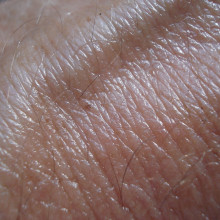
17:08 - Why people with Parkinson's start to smell different
Why people with Parkinson's start to smell different
Perdita Barren, University of Manchester
Professor Perdita Barran and her team at the University of Manchester have also been doing lots of interesting research on Parkinson's - including why people who have or are going to get the illness - to some people - start to smell different. Retired nurse Joy Milne, whose husband had Parkinson's, noticed this many years before his diagnosis, and she’s since been proved right. A "super smeller", she can pick up on people destined to develop the condition in the years ahead…
Joy - It can be a curse but it in this instance it's a superb gift I’ve been given. And I feel that I really do have to use it because having lived with Parkinson's for so long I think now is the time. We have the science, we have the research, and with those together we could diagnose Parkinson's earlier and then look at the inflammatory process far before the motor symptoms come in. And I think that's so important.
Joy Milne. And thanks to Joy, chemist Perdita Barran has been able to identity the cause of the altered smell profile, potentially leading us towards new ways to diagnose the disease as well as a better understanding of the mechanisms at play…
Purdita - What we found in the course of that was a really interesting thing, which was where the odour was strongest. And that was in regions of the body where there is more of a substance called sebum. Sebum is an oily, kind of greasy substance that we excrete everywhere. So what my team and I have done is to take swabs from the back of the neck and taken the sebum and looked at the molecules, the components within that sebum, and seen how they're different in people with Parkinson's and indeed people who are at the very early stages of Parkinson's compared to healthy individuals.
Chris - And what are the differences?
Purdita - If I was to swab a healthy person, I would see a particular signature, and if I was to swab someone with Parkinson's, I'd see another signature. And in a lot of our methodology, about 10% of the molecules we see are differently regulated. That means there's different amounts of them. Sometimes more, sometimes less, and consistently so in the people with Parkinson's and the people without. So we've actually got about 500 compounds that vary on the skin of people with Parkinson's from the skin of people who haven't got Parkinson's. And now our process is to try and use some of those to make a test that would allow us to confirm that someone has Parkinson's or not.
Chris - What do your instincts tell you about how far in advance of a person knowing they've got Parkinson's, that you begin to see these changes?
Purdita - So we've primarily focused on people who are what are called drug naive. So that means they've just had a clinical diagnosis from a neurologist, but they've not yet been treated with Parkinson's drugs. But we've recently done some work with a group in Vienna looking at people who have a related condition called REM sleep behaviour disorder. In those individuals we, in our measurement method - taking the seed from swabs, measuring with mass spectrometry, essentially weighing the molecules there, we see a distinct signature. Some of which is like Parkinson's signature and some of which is distinctive actually as its own stage of the disease. So we know that, in that cohort of people who have a very high likelihood of converting to Parkinson's, within a 10 year period, about 70% of them will, we can see early changes in their sebum that relate to progression of Parkinson's. We are currently doing a large study with a group in the USA looking at nurses who have got early symptoms of Parkinson's. And I hope to report on the results of that in the middle of next year. So we want to see how early these changes occur, why the changes occurring is something else we've been able to do. The molecules we look at are all metabolites, and those relate to biochemical processes that happen in all of our bodies. What we found is that in people with Parkinson's, a really important and really fundamental process that happens in our mitochondria, which is something called the carnitine shuttle, and it happens to give us more energy, actually it gives us energy to exist. It involves the import of long chain fatty acids into our mitochondria, and those are then used up to gain energy. We see that molecules involved in that process are downregulated and so we are less able to remove those long-chain fatty acids, and in fact we see more of them on the skin of people with Parkinson's. And we think that's related. So we are seeing fundamental dysregulation of several critical pathways within the cells of people with Parkinson's simply by taking a skin swab.
Chris - Do we know whether what you are seeing is cause or effect, though?
Purdita - There are two schools of thought with Parkinson's. People who believe it's a brain first disease, and those who believe it's a body first disease. I'm in the latter camp so far. We know that similar dysregulation occurs due to frailty. So some of this dysregulation is also seen in very elderly people. And to some extent, Parkinson's cells are cells that are ageing more rapidly than should happen to that individual. So we are pretty convinced, and there's good evidence from this where people who have genetic markers for Parkinson's have been screened, that the prodromal symptoms occur before there is significant damage to the brain. And why is another matter, but I am increasingly convinced that it is a metabolic effect that has happened. Sometimes due to genetic reasons and sometimes due to environmental reasons.
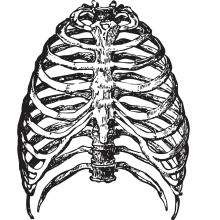
23:36 - Could vibrations help those with Parkinson's?
Could vibrations help those with Parkinson's?
Alastair Mackett, Addenbrooke's Hospital
How is the medical profession able to help people with the illness? We have a range of drugs that control the symptoms of the disease, which work chiefly by helping to replace some of the missing dopamine in the brain.There are also other interventions, including electrical stimulation to certain circuits in the brain and the spinal cord. But earlier this year, Addenbrooke’s Hospital in Cambridge became one of the first centres to try a new body-worn device that uses an observation going back two centuries and relies on vibration to help people with Parkinson’s to move more easily…
Alastair - My name's Alistair Mackett. I'm a consultant at Addenbrooke's Hospital in Cambridge. So interestingly, we started looking back to 200 years ago, back to Jean-Martin Charcot who, 200 years ago, noticed something really interesting: that patients that came to see him with Parkinson's were always better when they came to see him in his office than when he visited them at home. And I think he hypothesised that there was something about how they travelled and he thought, could this be vibration?
Chris - These would presumably have been horse-drawn carriages rattling over the cobbles of Paris. Because he was a French neurologist, wasn't he, Charcot?
Alastair - Absolutely. You've hit the nail on the head there. Absolutely he was saying, was this horse riding? Was this riding in the back of a carriage? And he got quite excited about it and they were sort of vibrating chairs back around 200 years ago. And we forgot about it with all the drugs and developments that have occurred. But more recently we've realised that some people can't tolerate some of the drugs or advanced therapies or are not suitable for things like deep brain stimulation. So there's a real appetite for non-invasive treatments or devices that may help some of the symptoms of Parkinson's.
Chris - Why would vibration make a difference? And is that real? If people are vibrated, is there evidence that it might improve things?
Alastair - So there's a body of evidence that suggests that it may have an impact and it may improve symptoms. And I think here in Cambridge we've been working with a CUE1 device, which is a small device. It's about the size of a two pound coin that sits on the chest on the sternum and supplies vibration. And that's picked up by your nerves and that signal goes up to the brain. And what we think is that when you get those signals up to the brain, it causes an alteration in brainwaves, which can be quite abnormal in Parkinson's. So we have particularly beta wave activity, which when it is normally high, makes you potentially stiff and slow. But when you provide some vibrotactile stimulation, it can bring down that beta wave activity and put you in a more ready to move state and really potentially some of those symptoms.
Chris - You've got one of these CUE1 devices on the table in front of us. As you say about the size of a big coin, two pounds. And quite thin. Is that sticky then, I'd stick that on my sternum.
Alastair - So I'll just put it on my chest here. So effectively there's an adhesive, a medical adhesive a bit like Velcro. It sticks the CUE1 device onto the chest and then you can turn it on and you may be able to hear a sort of vibrating noise.
Chris - Hmm. It's like when your phone's on vibrate mode and it's buzzing. That's transmitted into your chest.
Alastair - Yep, you can feel that transmitted. You know, it's a really simple intervention that seems to have benefits for some patients with Parkinson's.
Chris - Does it have to go on the chest on your sternum? Could I put that anywhere?
Alastair - People have tried it in other areas. It seems to be the sternum that has the biggest effect.
Chris - It's quite bony there. Is it getting in well?
Alastair - I think it's probably your rib cage resonating and giving a bigger effect.
Chris - So if you stick electrodes on someone's head and look at their brain waves when you are doing that, can you see a difference?
Alastair - So we can see changes within brainwave activity, which is really exciting and starts to hopefully explain what Jean-Martin Charcot was seeing 200 years ago. And obviously he couldn't prove that with an EEG in the way that we can now in the 21st century.
Chris - But if you ask a patient, 'are you moving more easily?' I know it's subjective, but do you get an improvement? Because it's hard to do a blind trial with this, isn't it? They know it's buzzing. So there must be quite a lot of kind of queuing or placebo effect here, but do they move more easily?
Alastair - So, of the data so far, around 75% of people are seeing evidence which is meaningful to them. As you say, quite rightly, there's always a concern that there is a placebo effect in Parkinson's. And further trials are planned in the coming months and years ahead to try and account for that. But as things stand, people are seeing meaningful benefits.
Chris - So how do you think it's working? What do you think it's actually doing in their brain? That means that just a bit of a vibration applied to the chest can get around some of the difficulties with Parkinson's.
Alastair - What we're giving them is a peripheral stimulus and that signal is going up to the premotor cortex within the brain. So it is tricking the body into the fact it's moving or in a moving state. And that seems to have a knock on effect by reducing the beta wave activity within the brain and effectively getting people to move more easily.
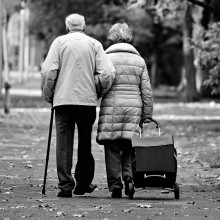
29:02 - Spinal implant allows man with Parkinson's to walk again
Spinal implant allows man with Parkinson's to walk again
Jocelyne Bloch
There’s been considerable excitement following the news that a man with advanced Parkinson's disease, which had caused severe problems with walking, is up and about again, covering literally miles each day. This is thanks to a special implant that stimulates nerves in his spine. Marc Gauthier - who is a 63-year-old from Bordeaux in France - is the first person to try out the device and he says it has given him a second chance in life. Neurosurgeon Jocelyne Bloch fitted Monsieur Gauthier’s device…
Jocelyne - So the device is composed of two parts: electrodes that are stimulating the spinal cord and the pacemaker or a neurostimulator. Everything is under the skin. So when we stimulate the spinal cord, we can reactivate the muscles of the legs in order to improve the gait of people. So this was developed many years ago to treat people with spinal cord injury, and now we apply this treatment to people with Parkinson's disease.
Chris - How are you doing that? Are you eavesdropping on the signals that are coming so you can work out what the person's intention is and then reinforcing it?
Jocelyne - Yes. First of all, we implant electrodes in the region of the spinal cord that is controlling each movement, each muscle. And the stimulator is going to be programmed in order to follow what the patient wants to do. I'll give you an example. If the patient has an asymmetry when he's walking, he has less hip flexion on the right, or less ankle extension on the left, we can compensate this with the spinal cord stimulation and we look at what he's doing and we can adapt the stimulation while he's walking.
Chris - Was there a sort of learning phase then when you turned into what those nerve signals that would normally make him move and not move very well were, and then train your system to deliver the right sort of compensation to balance things up.
Jocelyne - So what we've seen is that in the laboratory, when we have all the possibility to look at his gait and adapt the stimulation, the response is immediate. He could walk properly immediately after the implantation. But then it took a while to train him with the stimulation and to also use it outside from the laboratory and use it outside, walking in a department store, walking upstairs, visiting any type of building. And that took a little bit more time.
Chris - Is there any improvement in his baseline function without the device? Has it helped him to overcome any of the difficulties or is he completely disabled without it, or back to how he was, and as soon as he turns it on he's better.
Jocelyne - So we recently met him again, you know, and we did a lot of tests without stimulation and with stimulation. And there is a huge difference. I would say, we implanted this patient two years ago and within two years his disease has evolved and he's now worse than he used to be. And without stimulation, he's almost falling all the time. And, the stim is still very efficient and he really needs it to be better in his everyday activity.
Chris - How tricky is it to do this sort of surgery? Is it relatively simple to implant these devices?
Jocelyne - So these devices were already implanted in many patients, but for other indications. Namely to treat neuropathic pain. The difference in our case is that we have to insert the electrodes very precisely in order to be able to control each muscle of the legs. And to prepare this surgery we modelise the patient's spinal cord and we know where the different roots that are then going to innervate the different muscles are located. And it helps the surgeon to precisely position the electrodes. We also, during the surgery, do tests. Give an impulse to the spinal cord and you see the muscle reaction at the moment of the stimulation to make sure that the electrodes are well positioned. So I would say it's quite a common procedure, but done very precisely in that case.
Chris - And how long do you think it will last, the implant? Is it rechargeable or does it have an external power pack? Does it just clap out eventually and you're gonna need to go in and replace it?
Jocelyne - So we've selected the rechargeable stimulator, but we know that it's not an internal device. And in general, after 15 years, 20 years, you have to replace it, but it's only the battery that needs to be changed, the neurostimulator and not the electrodes. So it's quite a simple surgery that can be done under local anaesthesia. Just open the skin and remove the old battery and change it.
Chris - And how generalisable do you think this intervention is? Could many Parkinson's patients who have problems with walking benefit from this or is this a special case?
Jocelyne - No, we hope that more people will benefit, but it's early to tell who is going to benefit from this therapy. So we have a good example, but we need to work on many more people to be able to have criteria that gives you the knowledge of who is going to be a good responder, and who is not. And for that we'll have a next phase trial that is supposed to be started next year that is going to support six more patients. And I'm sure that after this trial we'll have more knowledge on this application.










Comments
Add a comment